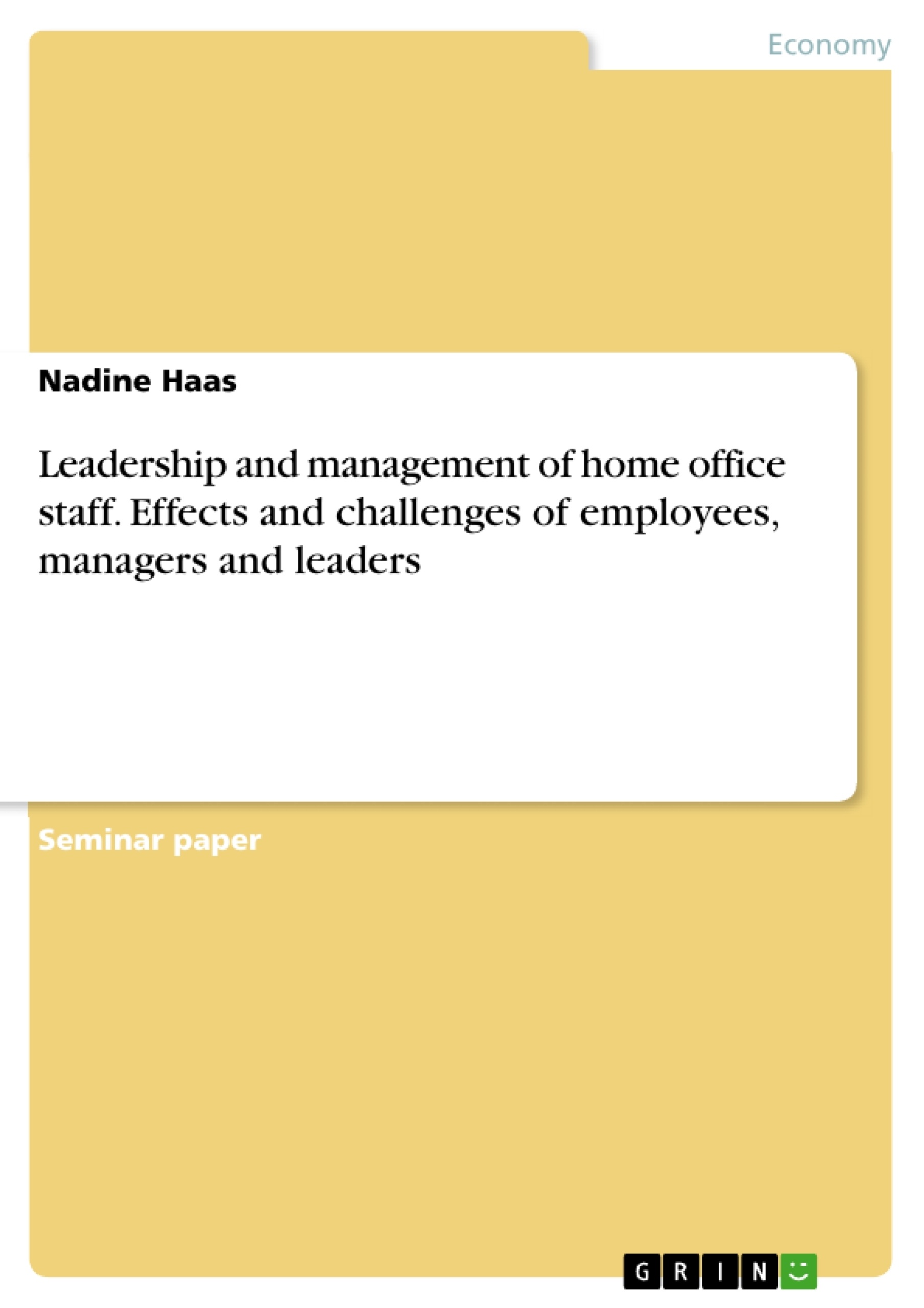This paper will give you an overview of current studies on the home office and its effects. It is also about the challenges of self-management for employees and managers as well as leadership from a distance. The next chapter sheds light on the design of the cooperation. The author is also going to introduce and analyze their own survey.
Inhaltsverzeichnis (Table of Contents)
- Introduction
- Short introduction of my own study..
- Current Studies.
- Leadership at a distance...
- Empfehlungen für die Gestaltung der Zusammenarbeit..
- Summary.
- Bibliography.
- Appendix Questionnaire....
Zielsetzung und Themenschwerpunkte (Objectives and Key Themes)
This assignment aims to analyze the impact of remote work, particularly home office, on leadership styles and management practices. The focus lies on understanding the challenges and opportunities of leading a team working outside the traditional office environment.
- Leadership in remote environments
- Communication strategies in remote teams
- The impact of home office on employee motivation and productivity
- Challenges and benefits of home office for both employees and managers
- The role of self-management in a remote work setting
Zusammenfassung der Kapitel (Chapter Summaries)
- Introduction: This chapter provides a background on the increasing prevalence of home office work in Germany, especially following the COVID-19 pandemic. It highlights the potential benefits of remote work, such as flexibility and work-life balance, while acknowledging the challenges it presents for both employees and managers.
- Short introduction of my own study: This chapter describes the author's own research project, a survey conducted via SurveyMonkey, which aimed to gather insights into the experiences of individuals working from home.
- Current Studies: This chapter reviews existing research on the home office, examining both its positive and negative impacts on employee well-being, motivation, and productivity. It highlights studies demonstrating increased motivation and productivity in home office settings, often attributed to the elimination of interruptions and the ability to focus better on work. However, it also acknowledges concerns regarding potential risks, such as reduced social interaction and the perceived loss of control by managers.
- Leadership at a distance: This chapter focuses on the specific challenges and adaptations required for leadership in a remote work environment. It discusses how traditional leadership practices need to be adjusted to effectively manage teams working outside the office, emphasizing the importance of clear communication, trust, and a shift in leadership style.
Schlüsselwörter (Keywords)
This work explores the key concepts of remote work, home office, leadership styles, communication strategies, employee motivation, productivity, and self-management, analyzing their influence on individual and organizational performance within the context of a remote work environment.
- Quote paper
- Nadine Haas (Author), 2021, Leadership and management of home office staff. Effects and challenges of employees, managers and leaders, Munich, GRIN Verlag, https://www.grin.com/document/1139648



